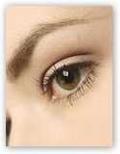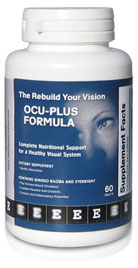|
Vision Care Correction Tips To Use As We Get Older
Here are some Vision care tips: In addition to the visual habit patterns, eyesight is influenced by three other factors. The first is secondary tension The second is limiting or negative thoughts about vision. And the third is subconscious memories and past emotional decisions. All these factors combine in each person differently, so each person's vision care is affected to a different degree by each one. But it is important to address each one to see what role it has played in your vision. Let's look at each one closely. Secondary Tension Secondary physical tension is any body tension that limits the free movement and functioning of the eyes. This tension is usually in the upper body – the chest, shoulders, neck, head, face and jaw. In fact, people with different Problems with Eyesight tend to exhibit different patterns of tension. Nearsighted Vision people, for example, often hold tension in their upper back, shoulders, and base of the neck as well as right around the eyes. People with Hyperopia also known as "farsightedness" or "long sightedness", on the other hand, often tend to experience more tension in the front part of the upper body – the chest, throat and jaw areas. People with Astigmatism are more prone to exhibit twists and imbalances in their posture – as if the distortion of the eye is mirrored in the body. And those people who have a lack of eye coordination or who see differently out of each eye often mirror that in the body by exhibiting a lack of skilled eye-hand coordination, or by experiencing a variety of differences between the two sides of the body. Limiting or Negative Thoughts The next factor that can affect our vision care is limiting and negative thoughts. “I can't see” is obviously the most commonly used negative statement. Just think how many times you've said that to yourself – without even really thinking about it – throughout the years – “I can't see”, “I can't see without glasses”, “I can't see that”, “I can't see this”, etc. etc. Most people who have clear vision care take it for granted. They don't walk around thinking positive thoughts about their eyes; they just take it for granted. But if a person has a vision care problem, they start to develop a set of negative thoughts about their eyes. A whole cluster of negativity about vision care begins then. Now of course, we all want to be honest with ourselves. It would be foolish to tell ourselves we can see something when it isn't clear. But it's very crucial to understand that there is a part of ourselves and our bodies that listens to – and responds to – what we tell ourselves. Negative thinking tends to reinforce itself. Try using different phrases instead. “My vision is always improving” or “I'm looking for my vision to change”, or “My vision is becoming clearer and clearer everyday” or “I want to see more”. These phrases are all just as “true”, in a sense, but they reinforce the possibility of change.
Subconscious Memories and Past Emotional Decisions Unfortunately, it's not as simple as saying “I want to see” and then having your vision become perfectly clear. That is an important first step but often, it is the deeper level – what we hold to be true subconsciously that has the most profound affect on how we see. This is another factor that affects vision. What is needed on this level is what I call psycho-visual alignment: This combines releasing the inner barriers to seeing, the healing of memories and the alignment of the inner consciousness and the outer desire to see. To understand how this works, divide your life into two distinct stages – the first stage being the time from when you were born to the time you first noticed a problem with your vision. The second stage begins when you got your first pair of glasses and continues until now. This second stage is all after the fact and doesn't have anything to do with whatever may have caused the problem in the first place. During the first stage, whether it is consciously remembered or not, you had naturally clear vision. (Remember, poor vision is not genetic!) The Transitional Period Holds the Key To understand the inner causes of unclear vision care it is necessary to look at what I call the Transitional Period – that period of time – usually a year but it could have been longer – between seeing clearly with natural eyes to first noticing a problem. This physical change in vision care often follows changes in our own emotional and psychological responses to ourselves – or to the world around us – that become ingrained during this Transitional Period: Most people can identify a transition in at least one of these three major areas during the Transitional Period. Personal – changes in self image usually (but not always) accompanied by physical changes during adolescence, reaching puberty or with middle age. Emotional – changes in significant relationships. (Parents divorce, another child is born or a loved one dies) Situational – changes in the environment. (Moving to another town and having to make new friends or staying in the same town but switching careers, homes or schools)
Whatever the specific outer changes may have been, what are important are the significant inner changes of feelings, attitudes or perspective and the establishing of limiting emotional patterns. The emotional and subconscious statement “I don't want to see this part of myself or this problem” is what affects the visual system. During this Transitional Period a person usually doesn't want to admit to what is being seen, sensed or perhaps even feared. The message “I don't want to see what is going on” is sent to the subconscious mind. Often delivered with emotion, this message becomes a command to the mind to develop a more limited pattern of seeing and the Visual Process responds accordingly. Not wanting to be seen or hiding and protecting oneself from others out of fear or shame can also contribute to the closing and limiting of the visual system.

Subscribe to EyeSight Vision Care! , our monthly newsletter with in depth information to help you keep up to date on how to Protect Your Eyesight with a free bonus. Fill out the form below. You'll then receive an email asking you to confirm that you subscribed. You'll always have the option to unsubscribe at the click of your mouse.
|
More Information



















